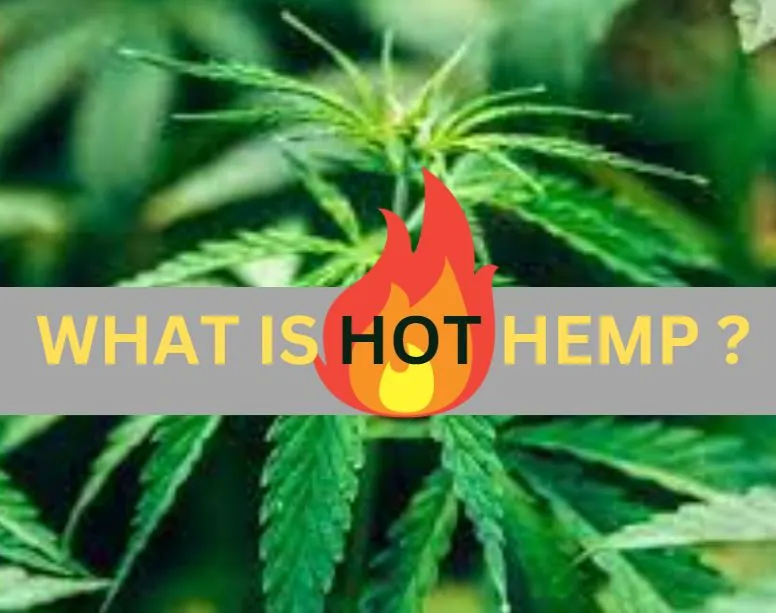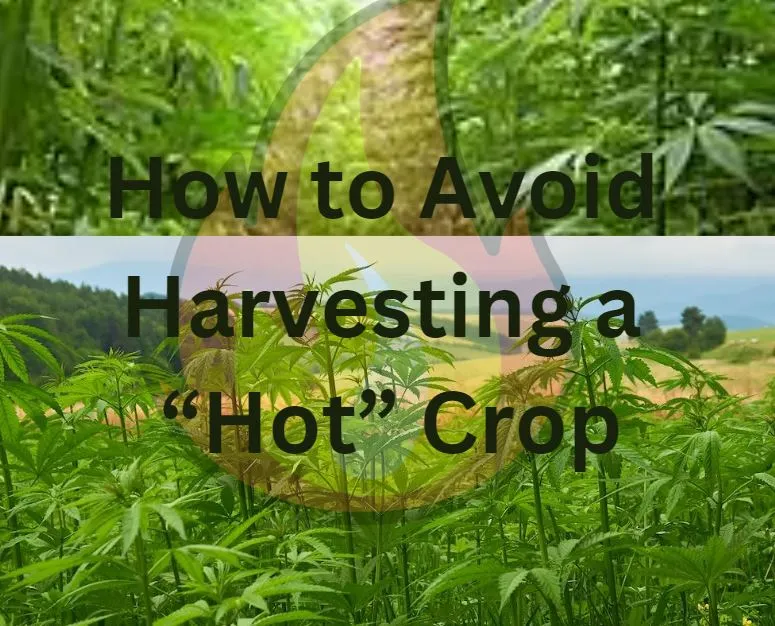In the past few years, the cannabis industry has undergone remarkable expansion and diversification, with one specific area garnering significant interest: hot hemp. While most people are familiar with hemp as a versatile plant known for its industrial applications and non-psychoactive properties, the term “hot hemp” refers to hemp plants that exceed the legal limit for THC content, making them unsuitable for traditional hemp-derived products. In this blog post, we delve into the world of hot hemp, exploring its significance, applications, and the implications it has on the cannabis industry.
What is Hot Hemp?
To comprehend the concept of hot hemp, it is crucial to grasp the legal framework surrounding hemp cultivation. In the United States, the Agriculture Improvement Act of 2018, commonly known as the Farm Bill, legalized the cultivation and sale of hemp with a THC content of 0.3% or less on a dry weight basis. THC, also known as delta-9-tetrahydrocannabinol, is the active ingredient in marijuana that induces the psychoactive effects commonly referred to as a “high.” Hemp that contains THC levels exceeding the legal limit is categorized as hot hemp.
Causes of Hot Hemp
The emergence of hot hemp can be attributed to a combination of various factors. One primary reason is the inherent variability in cannabis genetics. Even within the same strain or cultivar, there can be significant differences in THC levels due to genetics, growing conditions, and environmental factors. Additionally, inadequate testing protocols and techniques can lead to inaccurate THC readings, resulting in hemp crops that unexpectedly exceed the legal limit.
Applications and Challenges
While hot hemp may not be suitable for traditional hemp-derived products, it still holds value within the cannabis industry. One significant application of hot hemp is its use in research and development. Researchers can study high-THC hemp varieties to better understand the plant’s genetics, medicinal properties, and potential therapeutic applications. Moreover, hot hemp can be processed for CBD extraction, allowing for the production of THC-free CBD products.
However, working with hot hemp poses several challenges. First and foremost, legal compliance becomes a crucial concern. Cultivating and handling hot hemp requires meticulous adherence to local regulations, as the high THC content brings it closer to marijuana classification. Strict record-keeping, proper disposal of excess materials, and maintaining separation from THC-rich cannabis plants are vital to ensure compliance.
Regulatory Landscape
The legal landscape surrounding hot hemp varies from country to country and even within different states or regions. In some jurisdictions, any level of THC above the defined limit qualifies as marijuana, subjecting it to stringent regulations and potentially criminal consequences. Other regions have implemented more nuanced approaches, allowing for the controlled cultivation and processing of high-THC hemp under specific conditions.
The Future of Hot Hemp
As the cannabis industry continues to evolve, hot hemp presents both opportunities and challenges. The growing interest in cannabis research, coupled with advancements in breeding techniques, may lead to the development of high-THC hemp strains specifically tailored for medicinal purposes. Moreover, the extraction of THC-free CBD from hot hemp offers an alternative source for CBD products, ensuring a diverse range of options for consumers.
However, the regulation of hot hemp remains a critical aspect to address. Harmonizing legal frameworks and establishing standardized testing protocols are necessary to avoid ambiguity and provide a clear distinction between hemp and marijuana. This would facilitate the responsible cultivation and utilization of hot hemp without compromising legal compliance or consumer safety.
How to Avoid Harvesting a “Hot” Crop
Avoiding the harvest of a “hot” crop, or hemp plants with THC levels exceeding the legal limit, requires careful planning, monitoring, and adherence to best practices. To prevent the harvesting of hot hemp, follow these essential guidelines.
Select low-THC strains
Start by selecting hemp strains that are known for their low THC content. Look for cultivars that have been bred specifically for compliance with legal limits. This reduces the risk of encountering high-THC plants during the harvest.
Regular Testing throughout the Growing Season
Implement a comprehensive testing protocol throughout the cultivation process. Test the plants at multiple stages of growth to monitor THC levels. This enables you to identify and address any potential issues early on.
Monitor environmental conditions: Pay close attention to environmental factors that can influence THC production can be influenced by factors such as temperature, humidity, light exposure, and nutrient balance.Maintain optimal growing conditions to minimize the risk of elevated THC levels.
Proper Harvesting Timing
Timing is crucial when it comes to harvesting hemp. Test the plants shortly before harvest to ensure THC levels are within the legal limit.Incorrect timing during harvesting, either too early or too late, can lead to an increase in THC content.
Use Experienced and Trained Labor
Employ skilled and knowledgeable workers who understand the importance of compliance and can identify potentially high-THC plants. Train them on proper harvesting techniques and provide clear guidelines to avoid mixing hot and compliant plants during the harvesting process.
Maintain Strict Record-Keeping
Keep detailed records of each plant’s genetic information, cultivation practices, and testing results. This information will not only help you monitor THC levels but also assist in regulatory compliance and provide valuable data for future cultivation cycles.
Communication with testing laboratories
Establish a strong relationship with reliable testing laboratories. Consult them throughout the cultivation process, seek their advice, and ensure you are using accurate testing methods and protocols. Relying on their expertise can assist you in navigating potential challenges and ensuring adherence to THC limits.
Compliance with local regulations
Stay updated with the laws and regulations governing hemp cultivation in your region. Familiarize yourself with the specific THC limits, licensing requirements, and reporting obligations. Complying with legal requirements is crucial to avoid legal consequences and ensure the success of your hemp operation.
FAQS
Q: What is hot hemp?
A: Hot hemp refers to hemp plants that exceed the legal limit for THC content, which is typically 0.3% THC on a dry weight basis. THC (delta-9-tetrahydrocannabinol) is the psychoactive compound found in cannabis that produces the “high” associated with marijuana.
Q: How does hot hemp differ from traditional hemp?
A: Traditional hemp refers to hemp plants that fall within the legal limit for THC content (0.3% or less). It is primarily cultivated for its industrial applications, such as fiber, textiles, and seeds. Hot hemp, on the other hand, has THC levels above the legal limit and is not suitable for traditional hemp-derived products.
Q: What causes hemp plants to become hot?
A: Several factors contribute to the development of hot hemp. Genetic variability within cannabis strains, growing conditions, and environmental factors can all influence the THC levels in hemp plants. Inaccurate testing methods or protocols can also lead to misreadings and the classification of hemp as hot.
Q: Can hot hemp be used for any purposes?
A: Although hot hemp is not suitable for traditional hemp-derived products, it still has applications within the cannabis industry. Researchers can study high-THC hemp varieties for medicinal properties and potential therapeutic applications. Additionally, hot hemp can be processed for CBD extraction, allowing for the production of THC-free CBD products.
Q: What are the challenges of working with hot hemp?
A: Working with hot hemp presents several challenges. Legal compliance is crucial, as the high THC content brings it closer to marijuana classification. Proper record-keeping, disposal of excess materials, and maintaining separation from THC-rich cannabis plants are essential to ensure compliance. Additionally, handling hot hemp requires specialized knowledge and techniques to manage the higher THC levels safely.
Q: What is the regulatory landscape for hot hemp?
A: The regulatory landscape for hot hemp varies depending on the country, state, or region. Some jurisdictions treat any level of THC above the legal limit as marijuana, subjecting it to strict regulations and potential legal consequences. Other regions have implemented more nuanced approaches, allowing for controlled cultivation and processing of high-THC hemp under specific conditions.
Q: What does the future hold for hot hemp?
A: The future of hot hemp holds both opportunities and challenges. Advancements in breeding techniques may lead to the development of high-THC hemp strains tailored for medicinal purposes. Additionally, the extraction of THC-free CBD from hot hemp offers an alternative source for CBD products. However, establishing clear regulations and standardized testing protocols is necessary to ensure compliance and consumer safety.
Q: Is hot hemp legal?
A: The legality of hot hemp depends on the specific regulations of the jurisdiction where it is cultivated and processed. It is essential to stay updated with local laws and comply with the prescribed THC limits and licensing requirements to engage in hot hemp-related activities legally.
Q: Can hot hemp get you high?
A: Hot hemp, with THC levels above the legal limit, has the potential to produce psychoactive effects. The high THC content makes it closer in nature to marijuana. Therefore, consuming or using hot hemp products may result in intoxication or the typical “high” associated with cannabis.
Conclusion
Hot hemp is a significant development within the cannabis industry, presenting unique challenges and opportunities. While it may not meet the criteria for traditional hemp-derived products, hot hemp plays a vital role in cannabis research and development. As regulations and testing protocols continue to evolve, the potential applications of hot hemp, such as the production of THC-free CBD products, will expand.

